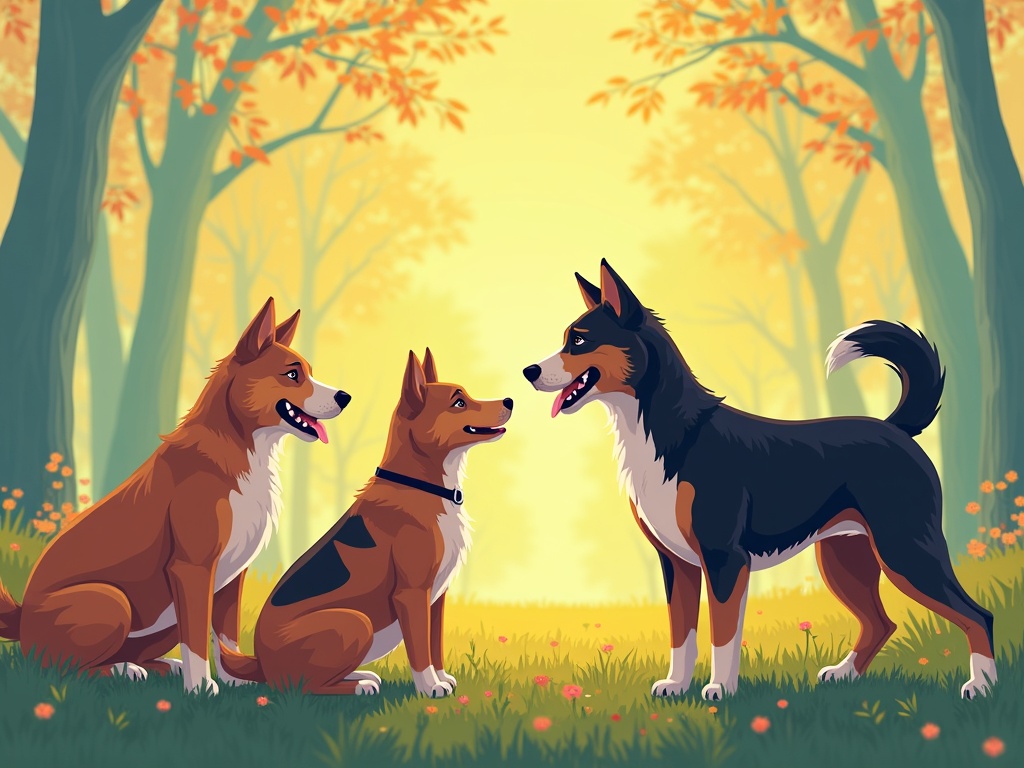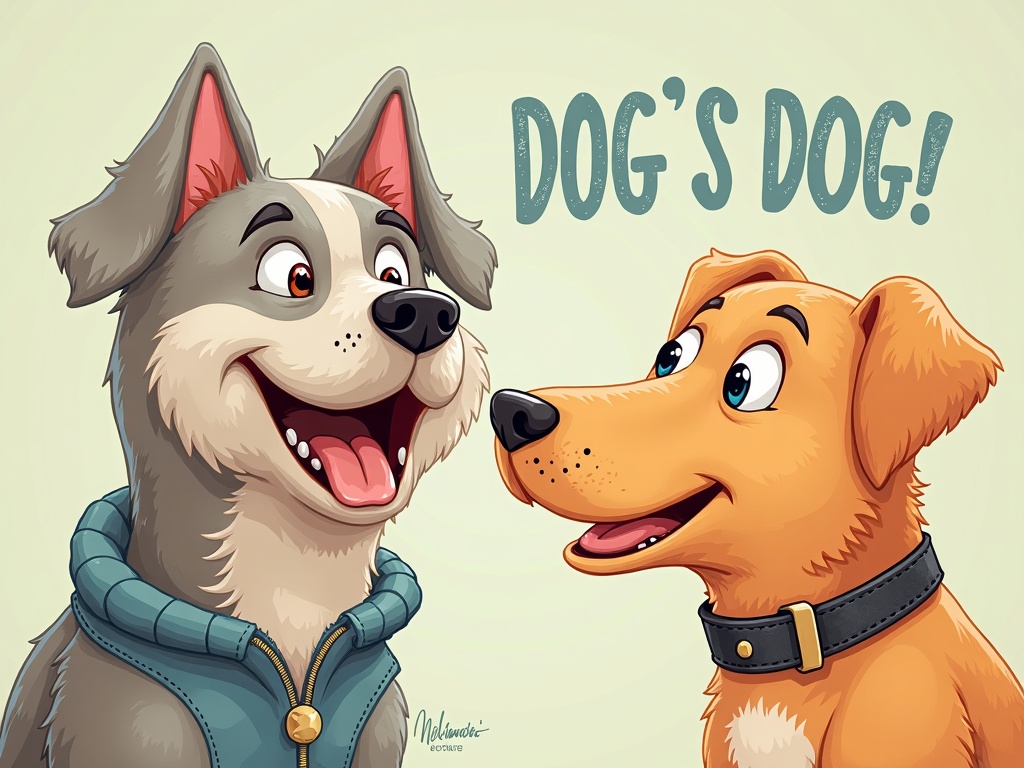The Art of Controlled Dog to Dog Introductions: A Comprehensive Guide
Imagine the scene: Two dogs, tails wagging tentatively, circling each other with a mix of curiosity and apprehension. Will it be a playdate dream or a canine catastrophe? The answer often lies in how carefully that initial meeting is orchestrated. A well-managed introduction can pave the way for a beautiful friendship, while a rushed or poorly planned one can lead to fear, aggression, and lasting behavioral issues. Learning the art of controlled dog to dog introductions is crucial for any dog owner looking to expand their furry friend's social circle and ensuring the safety and well-being of all involved.
Why Controlled Introductions Matter
Think of dog introductions like first dates. You wouldn't throw two strangers into a crowded room and expect them to instantly become best friends, would you? The same principle applies to dogs. They need time, space, and careful guidance to assess each other and establish a comfortable dynamic. Going slowly and prioritizing positive experiences can have a dramatic impact on their relationships moving forward.
Rushing the process can lead to:
**Fear and Anxiety:A negative first encounter can create lasting fear associations, making your dog reactive towards other dogs in the future.
**Aggression:If a dog feels threatened or overwhelmed, they may resort to aggressive behaviors like growling, snapping, or even biting. This is especially true if one dog has resource guarding tendencies.
**Injuries:Fights between dogs can result in physical injuries, requiring veterinary care and potentially leading to long-term trauma.
**Damaged Social Skills:A bad introduction can set your dog back in terms of socialization, making them less confident and comfortable around other dogs.
Setting the Stage for Success
Before you even think about bringing two dogs together, preparation is key. This involves assessing each dog's personality and temperament, as well as choosing the right environment for the introduction.
Know Your Dogs
Understanding each dog's history, temperament, and any potential triggers is paramount. Ask yourself:
**What is their history with other dogs?Have they had positive experiences in the past, or are they known to be reactive or aggressive?
**What are their energy levels?A high-energy dog might overwhelm a more sedate companion.
**Do they have any known triggers?Certain breeds might have predispositions or specific behaviors to be aware of.
**What are their play styles?Some dogs enjoy rough-and-tumble play, while others prefer a more gentle approach.
**Are either of them protective of toys, food, or people?Resource guarding can be a major source of conflict during introductions.
Choose the Right Location
The location of the introduction plays a significant role in its success. Opt for a neutral territory where neither dog feels the need to defend their space.
**Neutral Territory:Parks, walking trails, or even a quiet street can serve as neutral ground. Avoid introducing dogs in your home or yard, as one dog may feel territorial.
**Spacious Area:Ensure there's enough room for the dogs to move around freely without feeling cornered.
**Minimal Distractions:Choose a location with few distractions, such as loud noises, children, or other animals, which could increase anxiety.
**On-Leash vs. Off-Leash:While off-leash interactions can be ideal in the long run, it's crucial to start on-leash to maintain control and prevent potential problems.
The Step-by-Step Introduction Process
With the groundwork laid, it's time to begin the actual introduction. This process should be gradual and carefully monitored, with the focus on creating positive experiences.
Step 1: Parallel Walking
Begin by walking the dogs parallel to each other, maintaining a comfortable distance. This allows them to get used to each other's presence without direct interaction.
**Keep the leashes loose:Tight leashes can create tension and anxiety.
**Observe their body language:Look for signs of stress, such as stiff posture, whale eye (showing the whites of their eyes), or tucked tails.
**Reward calm behavior:Use treats and praise to reinforce relaxed behavior in the presence of the other dog.
**Gradually decrease the distance:Over time, slowly decrease the distance between the dogs as they become more comfortable. If either dog shows signs of stress, increase the distance again.
Step 2: Supervised Sniffing
Once the dogs are comfortable walking near each other, allow them to briefly sniff each other while still on leash.
**Keep the interaction short:Initial sniffing sessions should be brief, lasting only a few seconds.
**Monitor their body language closely:Watch for signs of tension or aggression.
**Intervene if necessary:If either dog becomes stiff, growls, or shows other signs of aggression, immediately separate them and increase the distance.
Step 3: Controlled Off-Leash Interaction (Optional)
If the on-leash introductions have gone well, you may consider allowing the dogs to interact off-leash in a safe, enclosed area. This step is not always necessary and should only be attempted if you are confident in your ability to manage the dogs' behavior.
**Enclosed Area:Choose a fenced yard or other enclosed area where the dogs cannot escape.
**Remove Potential Triggers:Remove any toys, food bowls, or other items that could trigger resource guarding.
**Supervise Closely:Monitor the dogs' interaction closely, watching for signs of tension or aggression.
**Allow Natural Interaction:Let the dogs interact naturally, but be prepared to intervene if necessary. Signs of positive play include play bows, chasing, and gentle wrestling.
**End on a Positive Note:Keep the first off-leash session short and end it before the dogs become tired or overstimulated.
Step 4: Continued Supervision and Reinforcement
Even after a successful introduction, it's crucial to continue supervising the dogs' interactions and reinforcing positive behavior. This helps to solidify their relationship and prevent potential problems down the road.
**Supervise meal times:Feed the dogs separately to prevent resource guarding.
**Provide equal attention:Make sure each dog receives equal attention and affection.
**Continue rewarding positive interactions:Use treats, praise, and playtime to reinforce positive behavior.
**Address any issues promptly:If you notice any signs of tension or aggression, address them immediately. Consult with a professional dog trainer or behaviorist if needed.
Recognizing and Addressing Potential Problems
Even with careful planning and execution, dog introductions can sometimes encounter bumps in the road. Knowing how to recognize and address potential problems is crucial for ensuring the safety and well-being of all involved.
Signs of Stress or Aggression
Be on the lookout for the following signs of stress or aggression:
**Stiff body posture**
**Tense facial muscles**
**Whale eye (showing the whites of their eyes)**
**Tucked tail**
**Raised hackles**
**Growling**
**Snarling**
**Snapping**
**Biting**
Intervention Techniques
If you notice any of these signs, it's important to intervene immediately.
**Verbal Interruption:A firm Hey! or Leave it! can sometimes disrupt the dogs' behavior.
**Physical Separation:If necessary, use a leash or other object to physically separate the dogs. Avoid putting your hands between them, as you could get bitten.
**Time Out:Separate the dogs and give them time to calm down before attempting another introduction.
**Seek Professional Help:If you are unable to manage the dogs' behavior on your own, consult with a professional dog trainer or behaviorist.
When to Seek Professional Help
In some cases, despite your best efforts, dog introductions may not go as planned. It's important to recognize when professional help is needed to ensure the safety and well-being of your dogs.
**Severe Aggression:If either dog displays severe aggression, such as biting or prolonged fighting, seek professional help immediately.
**Anxiety or Fear:If either dog shows signs of extreme anxiety or fear during the introduction process, a professional can help you develop a plan to address these issues.
**Resource Guarding:If either dog exhibits resource guarding behavior, a professional can help you manage this behavior and prevent conflicts.
**Lack of Progress:If you are not seeing any progress with the introduction process, a professional can provide guidance and support.
Conclusion
Controlled dog to dog introductions are an essential part of responsible dog ownership. By understanding the importance of careful planning, gradual introductions, and consistent supervision, you can help your dog develop positive social skills and build lasting friendships. Remember, every dog is an individual, and what works for one dog may not work for another. Be patient, observant, and always prioritize the safety and well-being of your furry friends. A little extra effort in the beginning can make all the difference in creating a harmonious multi-dog household.


